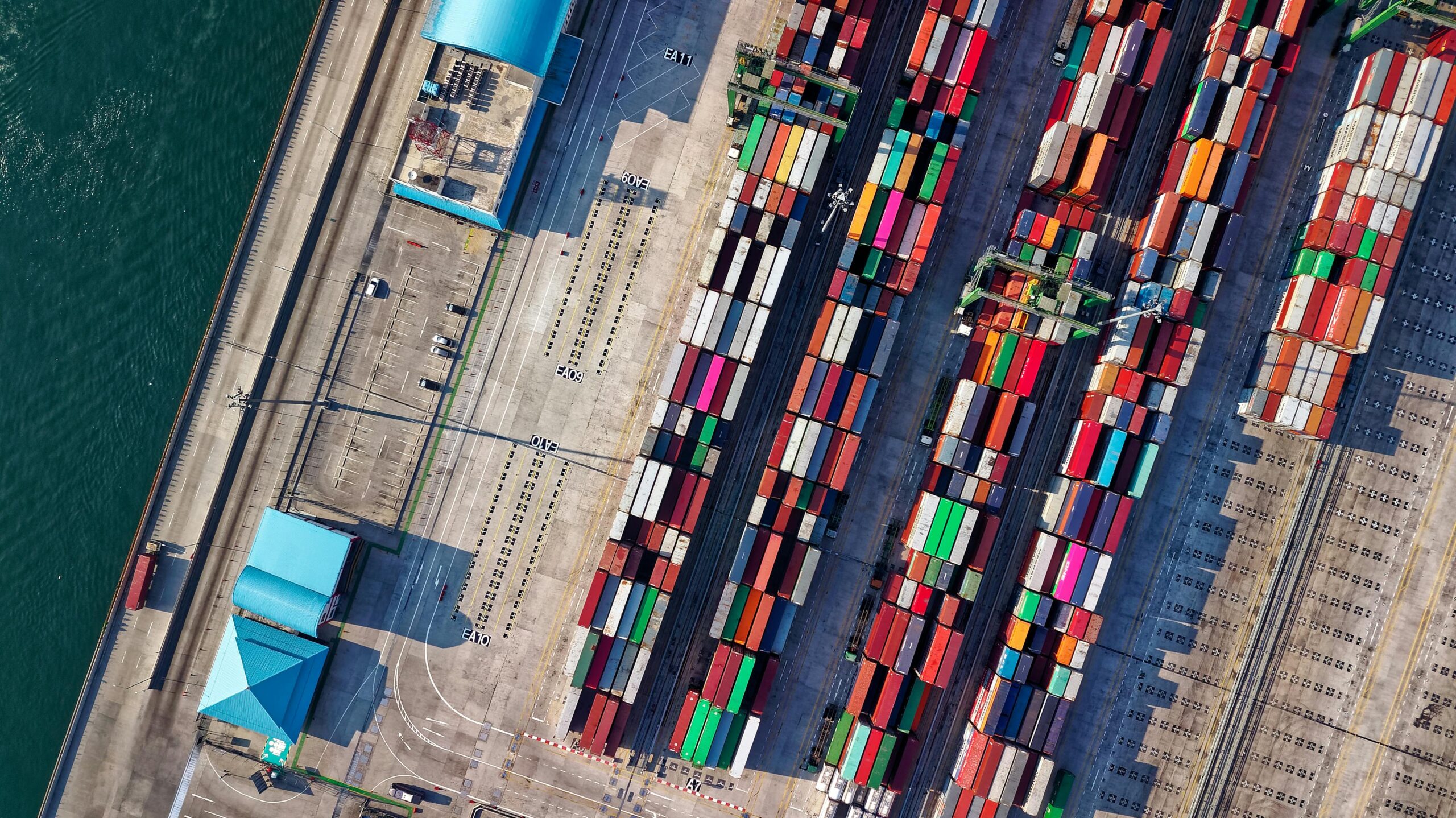Technologies
Industries
Capabilities
share article
No one can predict the full impact of the war in Ukraine, coming hot on the heels of the COVID-19 pandemic. But amid growing uncertainty, one thing is certain: this new global crisis will exacerbate existing supply chain bottlenecks and economic instability. That means taking steps now to mitigate your supply chain risks and prepare for significant challenges within manufacturing, distribution and logistics operations.
Managing Supply Chains in an Uncertain Time
Supply chains perform far better when economic conditions are stable and consumer demand follows a predictable, linear pattern: demand falls as prices go up and increases when prices go down. This allows manufacturers and retailers to work together to meet demand with less variability, which directly influences the cost of goods. In times of crisis, the usual pattern breaks down. Economic instability translates into higher cost, with any direct price savings between manufacturers and retailers seldom passed on to the consumer.
Global conflicts heighten the inherent supply chain risks that inevitably influence the successful flow of materials worldwide. Manufacturing stoppages, capacity constraints within logistics channels, and port backlogs impact the availability of raw materials and finished goods. In the case of war, supply chain channels can be severely constrained or even shut down—further stressing vulnerable supply chain networks.
Since Russia’s invasion of Ukraine began, we’ve seen multiple events and actions that could compromise international supply chain channels. Economic sanctions imposed on Russia by the United States and other NATO countries, followed by restrictions on air transportation, place a significant barrier to expedited distribution channels. And the threat of chemical and biological warfare has the potential to further compromise international supply chain channels. With primary lanes for international distribution either compromised or completely closed, alternate routes may be needed, extending lead times for high-demand commodities.
Supply Shortages Spur ‘Demand Shock’
Repercussions from the war in Ukraine are already creating “demand shock” in key industry sectors, from food and energy to cars and electronics. For example, it’s predicted the conflict could reduce global production of new cars and trucks by millions of units this year, as delivery of critical parts is disrupted. And price spikes and market volatility are wreaking havoc for farmers and food producers.
- Global Food Supply: Ukraine and Russia account for about 25% of global wheat production. Shortages in wheat production and distribution have a significant impact on food production. This hits especially hard in third-world countries that rely heavily on wheat exports from Ukraine. Future wheat supply is further jeopardized as farmers trade their harvesting combines for defensive combat weapons.
- Energy: If the war in Ukraine escalates, there’s good evidence to predict continued rising costs within the oil, natural gas and energy sectors, with a direct impact on supply chain costs. In addition to the rising cost of fuel, we’re seeing reduced purchasing power for ocean freight, longer lead times and higher labor costs—all of which hit the consumer wallet.
- Steel and precious metals: Although Russia accounts for only 5% of US steel imports, the fear of shortages has sent prices soaring, with May shipment prices up 59% since the day before the war started. In addition, the world relies on Russia and Ukraine for precious metals like copper, nickel and iron.
- Raw materials: Ukraine provides essential raw materials like palladium and neon gas, used to produce semiconductor chips. These are critical components not only in consumer electronics, but also automobiles and other products.
With looming supply shortages, panic-driven shifts in consumer demand can threaten manufacturing production, with some companies limiting the number of products produced. This increases variability in demand patterns governing supply planning, with a direct correlation on ecommerce final-mile delivery, as consumers choose to buy online, and pressure increases for home delivery capacity—especially for products that are harder to find.
How Do Companies Provide An Experience That Anticipates The Ways Their Employees Want To Work?
With so much uncertainty in demand forecasting, organizations can anticipate significant challenges within manufacturing, distribution and logistics operations on an international scale. In recent conversations with clients, we’re hearing about three key areas that are top of mind across industries as they take steps to mitigate supply chain risks.
01.
Strategic sourcing: Do I have diversity in my supplier base across contract manufacturing, raw materials and vendor sourcing?
As a result of the pandemic and now the war in Ukraine, organizations of all sizes are putting an emphasis on strategic sourcing and contract manufacturing. There’s a sense of urgency around managing working capital and product cost to improve operating margins. Many companies experiencing major supply shortages are looking at alternative procurement or distribution channels they can tap into to help get the needed supply of materials.
As a result, we’re seeing an uptick in demand for industry expertise in strategic sourcing, category management, vendor management and supplier risk management to optimize procurement functions. These drive infrastructure efficiency as well as reduce cost-to-serve and cost-of-goods-sold.
02.
Inventory management: Do I have enough supply to maintain production?
To manage the tensions between global supply and demand, one response is to build up inventory to offset potential shortages and delays in high-velocity consumer products. Over-ordering or building a surplus of critical materials cuts against the grain of traditional “just-in-time” inventory management and sourcing, but as my colleague Jessica Harris wrote, these widely accepted best practices can be risky when supply disruptions occur. Stockpiling inventory enables you to capitalize on just-in-time manufacturing based on the volatility of consumer demand.
Reverse logistics offers another opportunity to manage inventory and meet demand by capturing returned components or finished products and refurbishing them to offset material shortages. We’re now seeing more companies—even those that traditionally didn’t have a strong refurbishing program or robust reverse logistics network—looking at how they can get products back and then resell them, either as new or as OEM parts.
03.
Decentralizing distribution networks: How can I move products closer to my customers?
Based on consumer demand, it may make sense to reallocate product or even open new warehouses, expanding your infrastructure capacity to put products closer to the consumer and offset delays and long lead times. We’re still battling congestion with ships sitting off ports because they’re not able to get containers unloaded fast enough.
For the longer term, we’re seeing companies reevaluate their manufacturing footprint and look at alternative manufacturing locations in the US or Latin America to bring products closer to the distribution points and reduce the lead time. By reducing reliance on ocean freight and adopting intermodal transport methods such as roads or rail, you can expedite the movement of products from manufacturing sites to their final assembly or distribution points in the US.
Rethinking Traditional Supply Chain Responses
Even before COVID, many organizations were taking steps to improve supply chain performance, leveraging technology and digital resources to gain a competitive advantage while improving the overall efficiency of complex global supply chain networks—from smart manufacturing to artificial intelligence in distribution centers. During the pandemic, many organizations accelerated these strategic initiatives. Today’s supply shortages will keep up the pressure on supply chain management to rethink traditional responses for more innovative near-term solutions.
Nobody has a crystal ball. But it’s safe to say all these elements will remain on the table over the next several months and have implications for how we respond or try to mitigate those risks.





